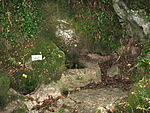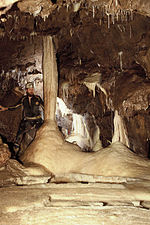Edford Woods and Meadows

Edford Woods and Meadows (grid reference ST665485) is a 54.3 hectare (134.1 acre) biological Site of Special Scientific Interest, between Nettlebridge, Holcombe and Stoke St Michael, Somerset, notified in 1957. This site is important for the occurrence of a wide range of types of semi-natural ancient woodland and for unimproved meadows and pastures of a type which is now uncommon in Britain.The forests in Edford Wood are dominated by Ash and Alder trees, with Pedunculate Oak and Sessile Oak growing there as well. Hazel and other plants form a lush and varied undergrowth, with different species living in the moist soil of the valley floor rather than in the drier soil further up the hill sides. The rare herb monk's hood grows in abundance in the region.
Excerpt from the Wikipedia article Edford Woods and Meadows (License: CC BY-SA 3.0, Authors, Images).Edford Woods and Meadows
Green Lane, Mendip Stoke St Michael
Geographical coordinates (GPS) Address Nearby Places Show on map
Geographical coordinates (GPS)
| Latitude | Longitude |
|---|---|
| N 51.23469 ° | E -2.48121 ° |
Address
Green Lane
Green Lane
BA3 5HH Mendip, Stoke St Michael
England, United Kingdom
Open on Google Maps







